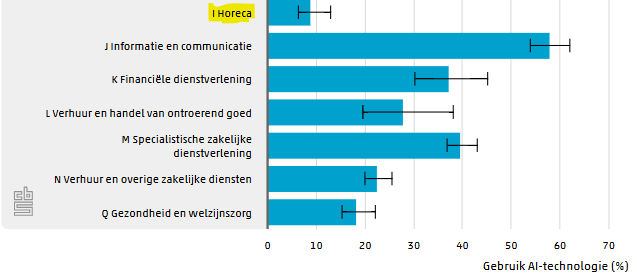The 2016 State of Marketing report is based on the responses from 3,975 marketing professionals in the US, Canada, Brazil, UK, France, Germany, Netherlands, the Nordics, Japan and Australia. I guess SalesForce customers are over represented, but it provides good insights nevertheless. They claim that only Marketers with ‘leadership roles’ have been included, so they establish a closer look at what separates the world’s most successful marketers from the rest. That makes us curious for what that would be, of course.
As I gave away in the introduction, that comes down to the fact that customer engagement is becoming the most important driver for marketing budgets. But it’s not yet topped by the more traditional brand awareness, which remains top priority under marketers. Maybe that is because they only interviewed senior (and thus older) marketers, because I would expect that to be different already this year, with customer experience and engagement proudly on top. High-performing marketing teams, according to the report, biggest challenges are to keep up with customers, to produce unique content and to recruit top talent.
(Of course) digital marketing is no longer specified, because all marketing can now be assumed to be digital. 70% of the total Marketing budget is spent in digital channels, and in the next two years, 97% plan to increase this further or keep it at this level.

In more detail, the report elaborates 9 key practices of high-performance marketing teams as a to-do list. These areas are:
Have a customer journey strategy.
This is where VEMT would include loyalty, because it makes sense to not only view the customer journey up to the moment of purchase, but rather what happens after that and how the customer will change into a returning customer with a high life time value. SalesForce describes that well-executed journeys have to be contextual to the moment and personalized to individual customers.
Know your customer and what he or she wants and how they’re interacting with you. The report claims that 73% of marketers have a customer journey strategy that positively impacts customer engagement levels. Remember, they have filled that in themselves, so it could be lower in practice.
Integrate the customer experience.
I guess this is to avoid the overhyped word ‘omni-channel’, but the meaning nevertheless is significant. Customer touchpoints still are often outside the marketing, sales or customer service scope, because only ‘the other silo’ has data available. Top marketers bring the silos down to gain a single view and deliver a unified experience for customers. It would not come as a surprise to you that our VEMT platform supports this view and functions as the basis for the integrated experience for most of our clients.
Also here, self evaluation of Marketers indicates that two-thirds (64%) of high-performing marketing teams claim they are “excellent” at having this arranged.
Get smart with the tech.
Great marketers are not only using more technology, but they also use significantly more advanced types of technology. The report says 72% of top marketing teams will increase spending on marketing technology in the next 2 years, while 54% see themselves as quite heavy tech adopters already. Top teams use more than double the number of marketing technologies than under-performers. The top 5 marketing technologies for top performers are marketing analytics (56%), data targeting and segmentation (51%), marketing automation (50%), use of lean/agile methods (49%) and predictive intelligence (49%).
It will not be a surprise that also loyalty technology rates very high. 78% of the Marketers rate loyalty campaigns on mobile as very effective or effective, only topped by exclusive deals (which we regard a part of any loyalty strategy).

Align marketing with business leadership
In companies where commitment to marketing starts at the company leadership, companies prioritize marketing and have sound investment levels in Marketing. It used to be a fight between IT and business (and we see in many companies it still is), but obviously it’s changing fast. Now it’s about making sure the C-suite has bought into the marketing plan so that there won’t be discussion about the marketing budget being allocated. 83% of high performers claim their executive team is committed to supporting the marketing strategy, compared to 31% of the under performers.
Align marketing channels
Your customers are cross-channel so your marketing must be cross-channel. It’s been said countless times because it’s true — but even from the marketer’s point of view, the lines between channels grow blurrier by the minute.
Among high performers who have integrated their digital marketing channels with their overall marketing, at least 95% rate the integrations as very effective or effective. Some 64% of high performers have integrated their email marketing strategy with the overall marketing strategy, 63% their social media marketing strategy and 60% their mobile marketing strategy.
Think mobile
We would say: ‘duh’, but obviously this is still a topic. Marketers who are planning to pilot push messages and mobile tracking in 2016 actually do so, so these tactics reach critical mass by 2017. Mobile hit a tipping point is the conclusion. A 98% growth in mobile app usage, a 111% growth in SMS usage, a 145% growth in mobile push notifications and a 149% growth in location-based mobile tracking. Those are clear numbers. As mentioned above, exclusive deals and loyalty programs are the most effective mobile campaign types. Around 50% of the Marketers claim mobile is directly linked to their primary revenue source. Now that number does impress us in 2016.
Use intelligent email to drive revenues
Gaining a deeper, behavior-based understanding of customers allows marketers to be smarter in creating next steps along the customer journey. It’s almost literally quoting the front page of the VEMT website, so we couldn’t agree more. With email personalization another key objective, top performers are using predictive analytics and data science to improve further. We see that Loyalty programs naturally produce the most effective email campaigns (79%) because data is available, which is followed closely by exclusive deals (78%) and social selling (77%). Half of the marketers claim email is directly linked to their business’ primary revenue source, from 20% in 2015. We actually would have this expected to be much higher, and at least higher than mobile, but this may be reflected by 79% saying that email directly generates ROI in 2016.
Use social for ROI growth
Social Media provides top marketers a forum to build digital rapport on a highly personalized scale, according to the report. 75% of marketers say social media is generating ROI, up from 28%, and this is while social publishing tools are only seen as very effective by 59% of high performers, while social listening tools are ranked as very effective by 58%, so these are not yet so impressive as could be, or never will be.

Spend on advertising on social platforms
Data, personalization and targeting are very important to drive successful campaigns. 91% of top marketers use data to segment advertising. 65% are growing their social advertising budgets for advertising, the third largest area for increased investment and one that 71% of respondents rank as very effective/effective. I think that is money not spend effectively by companies that didn’t create autonomous access to customers, for example when a loyalty program is not present. Not in every sector, loyalty can be implemented. Interesting is the comparison with 62% using display or banner ads and 54% who favor video or native advertising. Social, despite our vision that there are more effective ways of spending marketing budget, is growing, also relatively compared with other categories.
The success factor is – as you would expect in 2016 – customer data being used to increase personalisation, and thus relevancy. 87% of top performers exploit website activity data, while 83% use both customer data (based on, for example, email or phone data) and demographic data to segment and target ads. We expect more of our clients to use loyalty data to improve ad performance, something that was unthinkable just a few years ago.
Summarized, a really interesting confirmation of what seasoned marketers already knew, but the report does contain a few eye-openers for those who think the world doesn’t change that fast.






